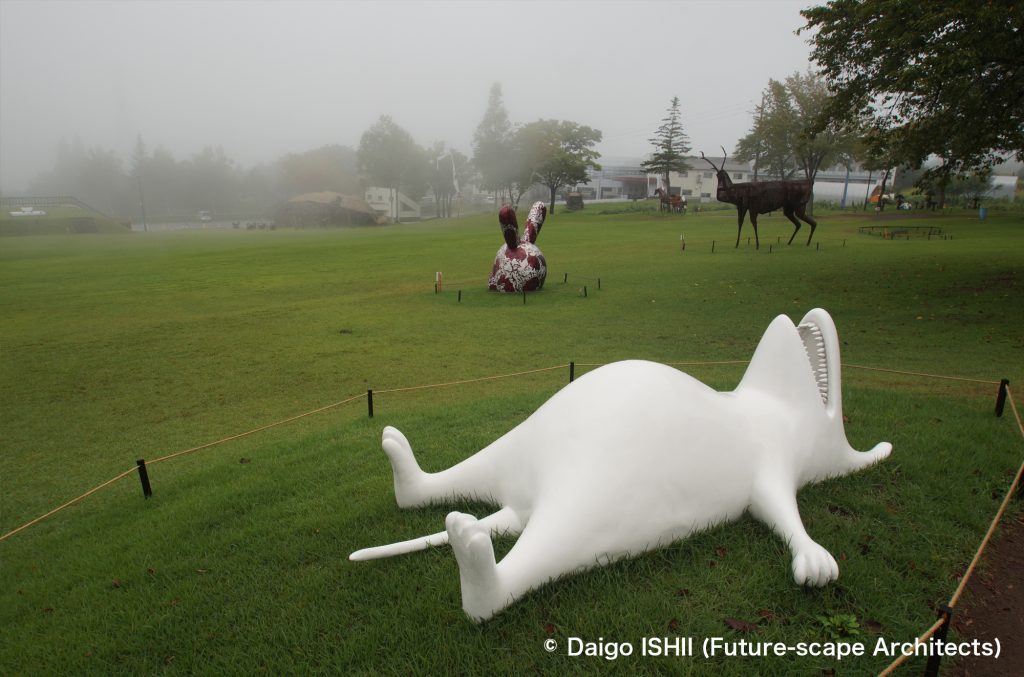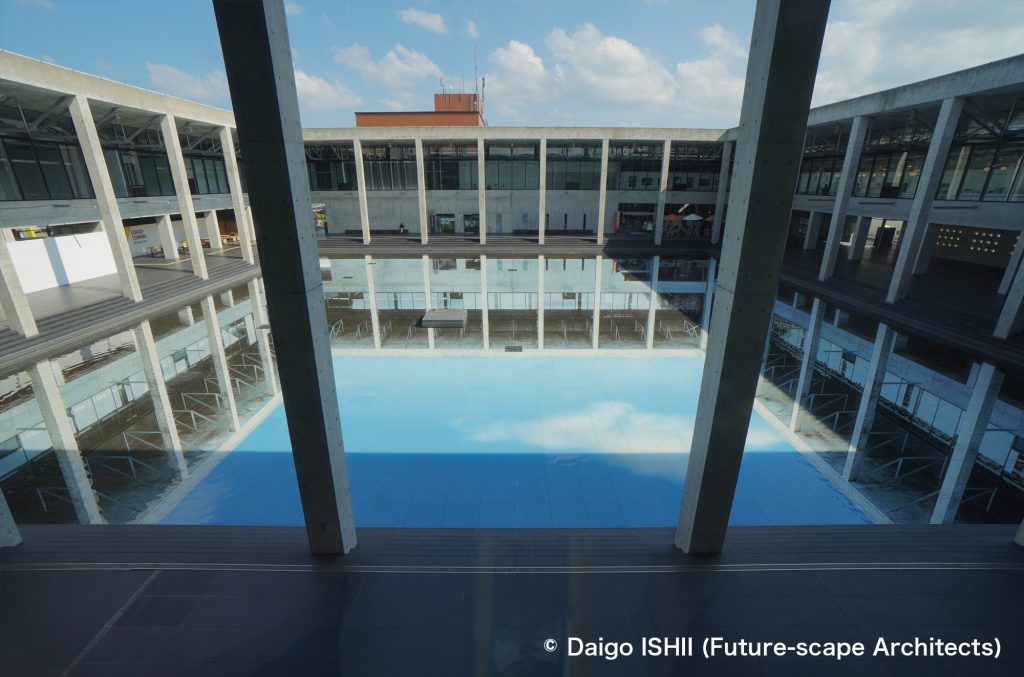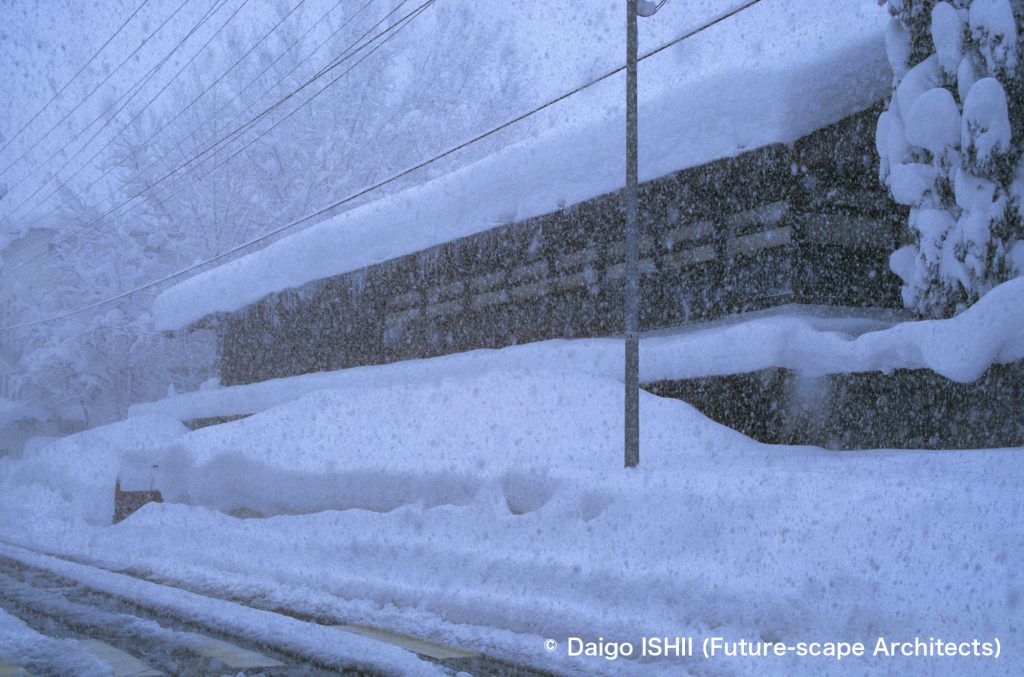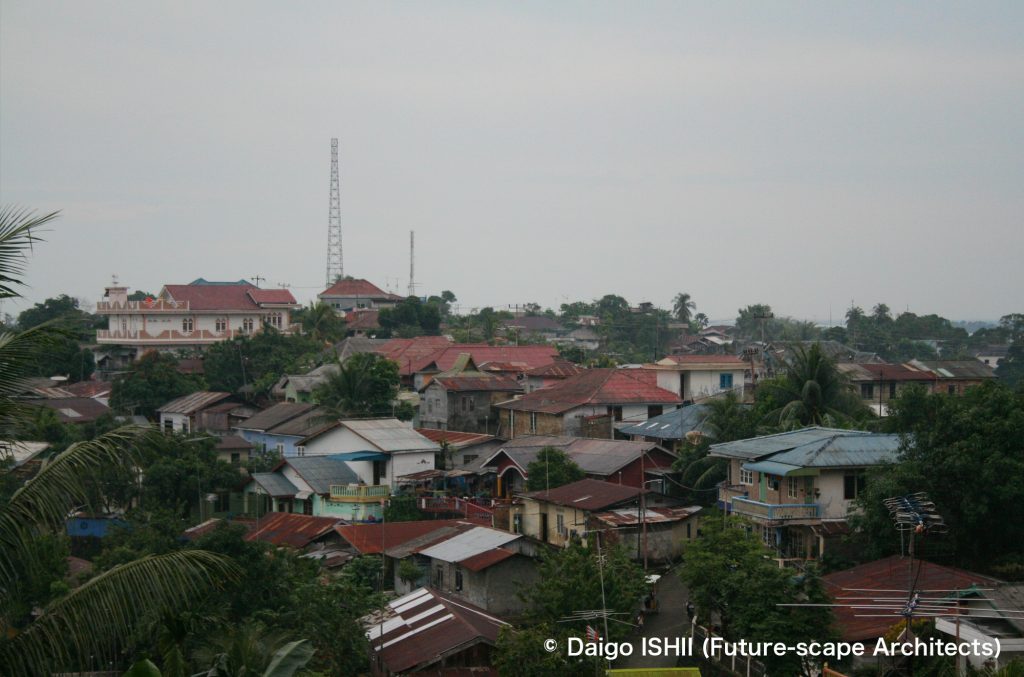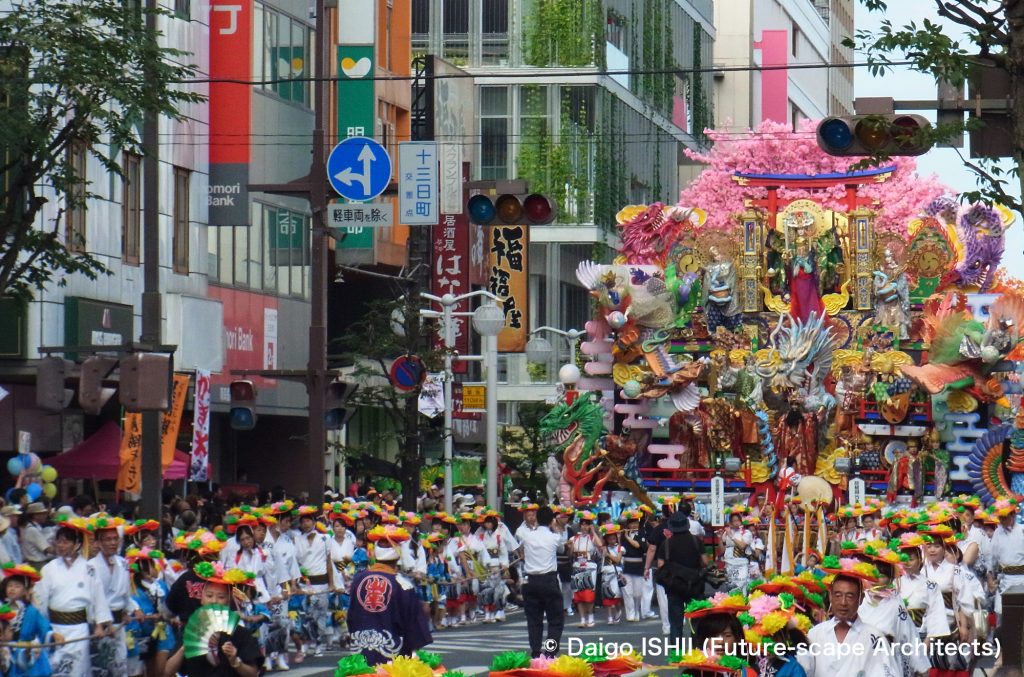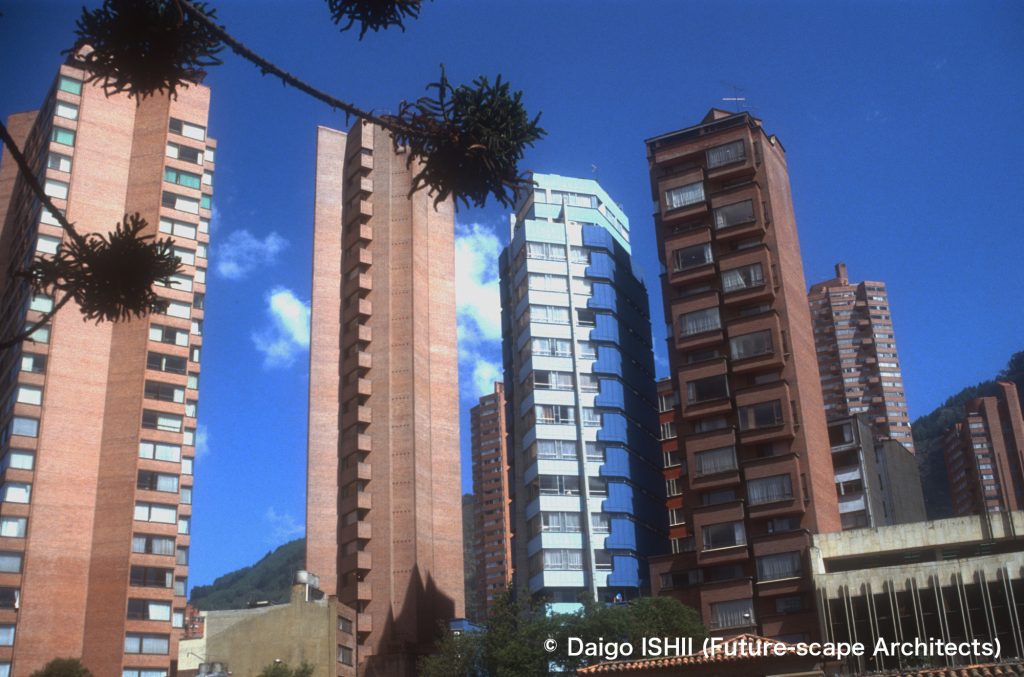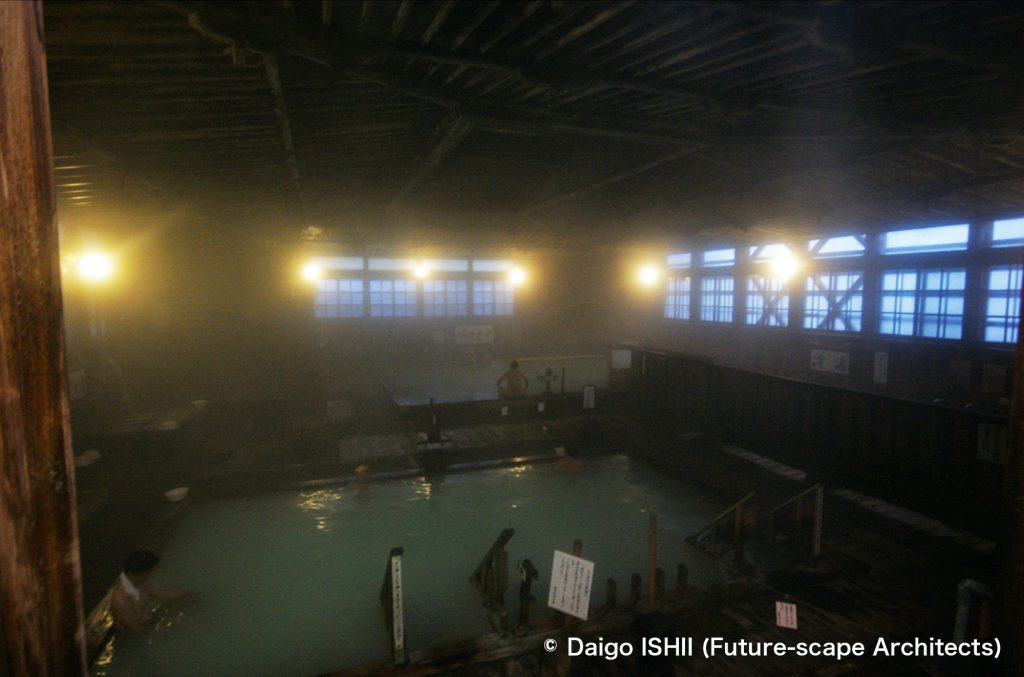妻有は民俗の宝庫と言われ、昔ながらの風景や生活、風習が、今も残ります。バブル期、山向こうの魚野川流域は、新幹線や高速道路によるアクセスのよさから、リゾートマンションや工場進出で大きく変貌しましたが、妻有へのアクセスが、ほくほく線や高規格道路の開通で改善されたのは、バブルのはじけた後だったためです。
1月14日、15日にあたる雪の小正月は、昔ながらの妻有を凝縮した、さまざまな伝統行事が行われる日。
Tsumari is sometimes called a treasure trove of folklore, and the traditional scenery, life, and customs remain. Because, during the bubble economy period in the 1980s, the development of Tsumari didn't advance due to inconvenient transportation, in contrast with the Uono River basin on the other side of the mountain, which was easily accessible by high-speed train and highway, transformed significantly by resort condominiums and factories. Meanwhile, after the bubble burst, the access to Tsumari was improved by the inauguration of the train and high-standard road.
On January 14th and 15th, various traditional ceremonies of the Little New Year, which condense old-fashioned Tsumari, are held in the snow.
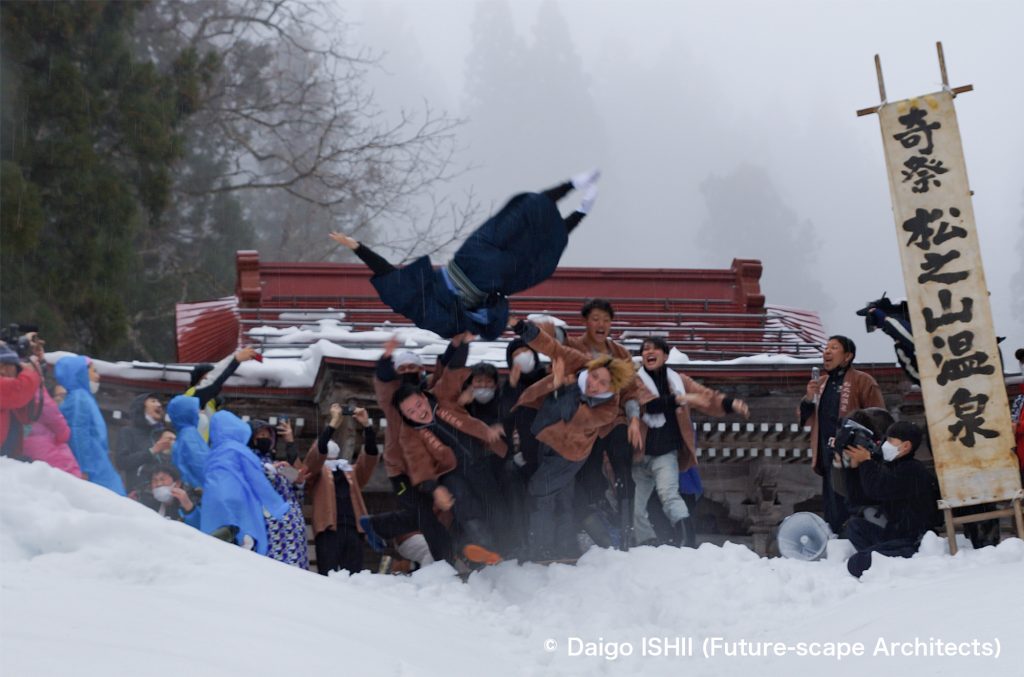
January 15th, after 2pm : In "Muko-nage (Throw away the groom)'' , the groom of a couple who got married in the previous year is thrown away by his fellow from the cliff.
https://goo.gl/maps/D9Sdsm4YeF7nxQDX8
14日夜に行われるのが巨大なカマクラ「ほんやらどう」と「鳥追い」。秋田や新潟の他地域に比べ、巨大なカマクラが妻有の「ほんやらどう」。豪雪地ゆえか、地域で独自に肥大したのか、巨大なため屋根を雪でつくれず、木材や竹を渡して鋼板やシートを掛けます。子供が集まり、中でお菓子や甘酒を楽しむと「鳥追い」の時間。拍子木を叩き、鳥追い歌を歌いながら、子供は暗い田畑や村を歩いて、穀物をついばむ鳥を追い払い、五穀豊穣を祈願します。村の各家の門前ではお菓子のご祝儀もあります。最近は、夜に子供が出歩くの嫌う親が増え、大人による「ほんやらどう」と「鳥追い」になる集落もあるのが、寂しいところ。
15日の朝、十日町中心街の諏訪神社の参道と境内で行うのが「節季市」。扱うのは、農閑期につくった藁細工や竹細工、予祝行事に使う、しんこ(米粉)でつくった小判や恵比寿様のような縁起物、そして、皆が買い求めるのが、しんこ(米粉)でつくった干支の人形「ちんころ」。小さくて可愛らしい人形で、しばらく置いておくと、ぽろっと欠けますが、そうすると願いがかなう説もあり。2023年より、コロナの影響と駐車場対策で、会場が変更となり、風情がなくなってしまいました。参道を歩いて買い物を楽しんだ後、神社に参拝するのが小正月にふさわしかったので、元に戻ってほしい。
15日の午後、松之山温泉の隣り合った場所で行うのが「婿投げ」と「墨塗り」。前年に結婚した夫婦の新郎を、温泉街から仲間が担いで行き、急坂を上った先にある薬師堂の崖から投げ落とすのが「婿投げ」。崖も雪が積もり、投げ落とされても大丈夫(なはず)。村の娘を奪われたことへの意趣返しが始まり。婚姻数も減った今は、公募で域外の人も参加でき、僕も、新郎となった友人を担ぎましたが、自分一人で上がるのも息切れするほどの急坂に力尽き、最後は担いでいる振りをしただけ。
「婿投げ」の後が「墨塗り」で、どんど焼きを発展させたもの。どんど焼きで焼いた藁の墨を、参加者の顔に塗り合い、無病息災を祝います。見学者も全員参加が楽しく、逃げても無駄で、墨のぬるっとした感じがどうも馴染めないのですが、抵抗しても容赦無く塗られます。
以前は、1月15日の「成人の日」は固定した祝日で、祝日前夜と祝日に行う行事でしたが、2000年に始まったハッピーマンデー制度で、「成人の日」が1月第2月曜日に移ったため、平日となった1月15日開催が増えました。都市に住む人が考えた、都市に住む人に都合のいい制度は、地方の事情を置き去りにし、地方の文化に影を落とします。
と言い切りたいところですが、実際には、明治維新後の旧暦から新暦への変更で、正月も小正月も、本来の季節と、すでに違っており、そこまで遡る伝統文化の話なのかもしれません。
On the night of the 14th, the giant snow dome "Honyarado" and "Torioi (Chase away birds)" are held. Tsumari's Honyarado is bigger than the snow dome in other areas because of the heavy snow or the region's swelling preference by any chance. It is impossible to build the big roof with snow, so it uses steel plates or sheets on wooden and bamboo frames. Children gather and enjoy sweets inside. Afterwards it's time for "Torioi". While beating clappers and singing Tori-oi songs, children walk through dark fields and villages to chase away birds that pick grains and pray for a bountiful harvest. There is also a celebration of sweets in front of the gate of each house in the village.
On the morning of the 15th, the "Sekki-ichi (Season Market)" is held on the approach to Suwa Shrine in downtown Tokamachi. The stands deal in straw and bamboo crafts made during the off-season for farming, oval gold coins and lucky charms made from Shinko (rice flour), which are used for omen events, and the zodiac signs doll "Chinkoro" made from Shinko (rice flour) that everyone buys. It is a small and cute doll, and if you leave it for a while, it will chip away, but it is said that your wish will come true if it so happened. In 2023, due to the influence of Corona, the venue was changed and the atmosphere was gone. After walking along the approach to the shrine and enjoying shopping, it was appropriate for the Lunar New Year to visit the shrine, so I hope to go back to the way it was before.
On the afternoon of the 15th, the "Muko-nage (Throw away the groom)'' and "Sumi-nuri (Paint charcoal)" are held in the adjacent places of Matsunoyama Onsen Hot Spring. In "Muko-nage", the groom of a couple who got married in the previous year is carried by his fellow from the center of the hot spring area and is thrown away from the cliff in front of a small temple. Since snow piles up on the cliffs, he should be okay to be thrown down. It derives from revenge for the fact that the daughter of the village was snatched. Now the number of marriages has decreased, so grooms from outside the region can participate in open recruitment. I carried my friend, who became the groom, but the path to the small temple was so steep that I was out of breath. In the end, I just pretended to carry him.
After "Muko-nage (Throw away the groom)'', "Sumi-nuri (Paint charcoal)" starts. The participants mutually smears their face with straw charcoal that has been baked to celebrate good health. All people enjoyed and can't run away from that.
In the past, January 15th was a fixed traditional holiday and the ceremonies were held on the holiday eve and the holiday. In 2000, the government shifted the holiday to the 2nd Monday of January. Now the ceremonies are often held on a weekday. City dwellers established the system convenient for city dwellers without considering local circumstances and culture. But, in fact, due to the change from the lunar calendar to the solar calendar in 1873, the New Year and Little New Year has already been different from the original seasons on the lunar calendar. Perhaps the argument on traditional culture should go back to that.
ほんやらどう / Honyarado

January 14th, daytime : Local residents are installing "Honyarado". It uses steel plates or sheets on wooden and bamboo frames.
https://goo.gl/maps/XL58ApB9AnNC949X9
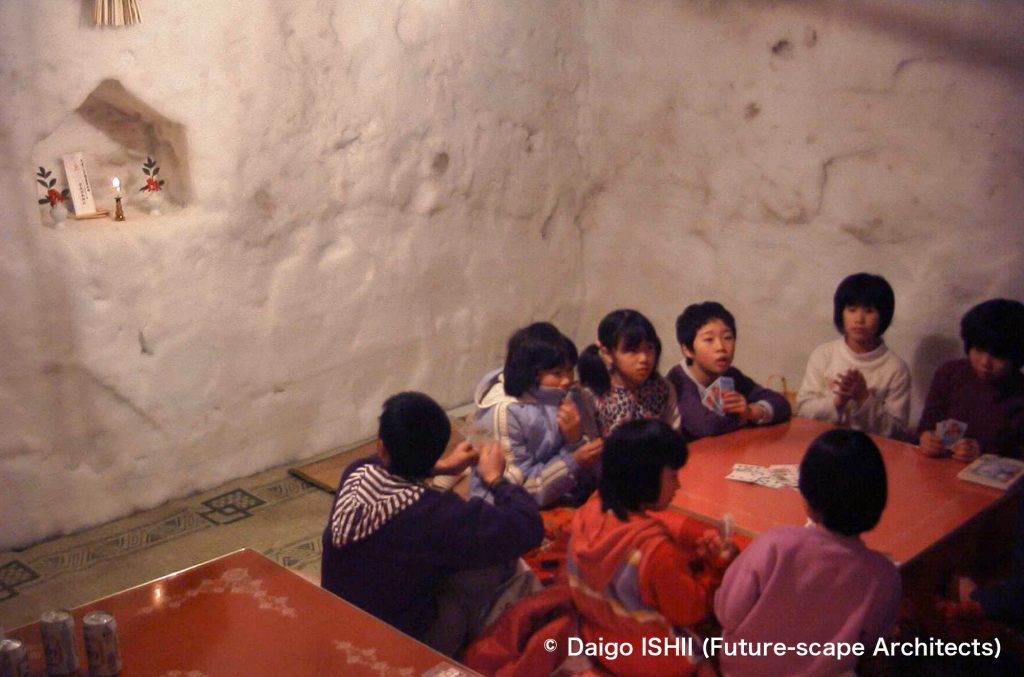
January 14th, night : Children play and eat sweets inside "Honyarado". The shrine carved into the wall enshrines Suitengu deity, which has a deep connection with water.
https://goo.gl/maps/XL58ApB9AnNC949X9
節季市 / Sekki-ichi (Season Market)

January 15th, morning : See "Sekki-ichi (Season Market)" , which is held on the approach to Suwa Jinja Shrine in downtown Tokamachi.
https://goo.gl/maps/sk42rZAwHGAGA5Jv5
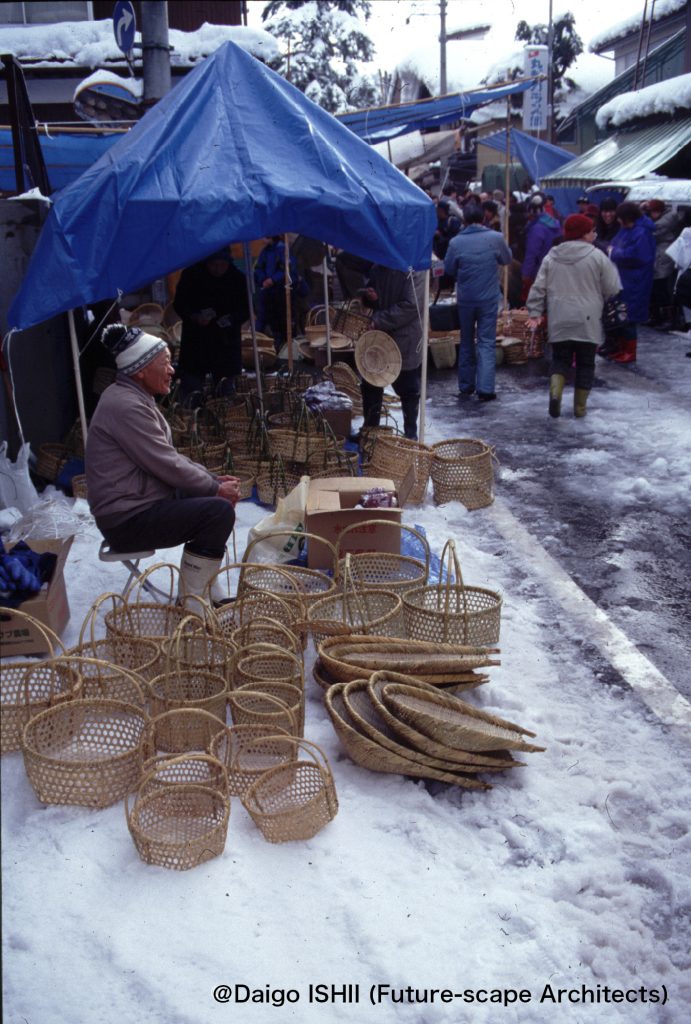
January 15th, morning : In "Sekki-ichi (Season Market)" , bamboo baskets made during the off-season for farming are on sale.
https://goo.gl/maps/sk42rZAwHGAGA5Jv5
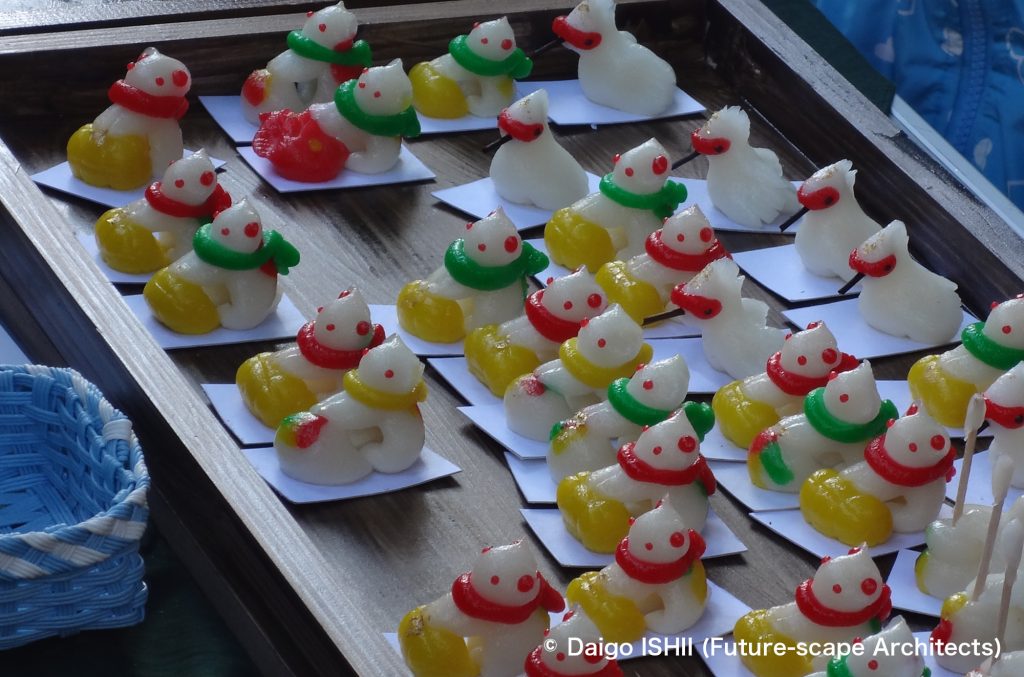
January 15th, morning : The main product of "Sekki-ichi (Season Market)" is the zodiac signs doll "Chinkoro" made from Shinko (rice flour).
https://goo.gl/maps/sk42rZAwHGAGA5Jv5

January 15th, morning : In "Sekki-ichi (Season Market)", oval gold coins and lucky charms made from Shinko (rice flour) are on sale. Locals hang it from a branch and decorate it in the living room of their house.
https://goo.gl/maps/sk42rZAwHGAGA5Jv5
婿投げ / Muko-nage (Throw away the groom)

January 15th, afternoon : In "Muko-nage (Throw away the groom)'', a newly-wed couple and his fellow hold a party with the youth officers of the hot spring district's cooperative society at the large room of Japanese-style Inn before departure.
https://goo.gl/maps/YvymLWAdvhW2yLoC9

January 15th, after 2pm : In "Muko-nage (Throw away the groom)'', the groom is carried up a steep slope by his fellow. They are about half way up from the asphalt paved road below to the top of the cliff.
https://goo.gl/maps/D9Sdsm4YeF7nxQDX8
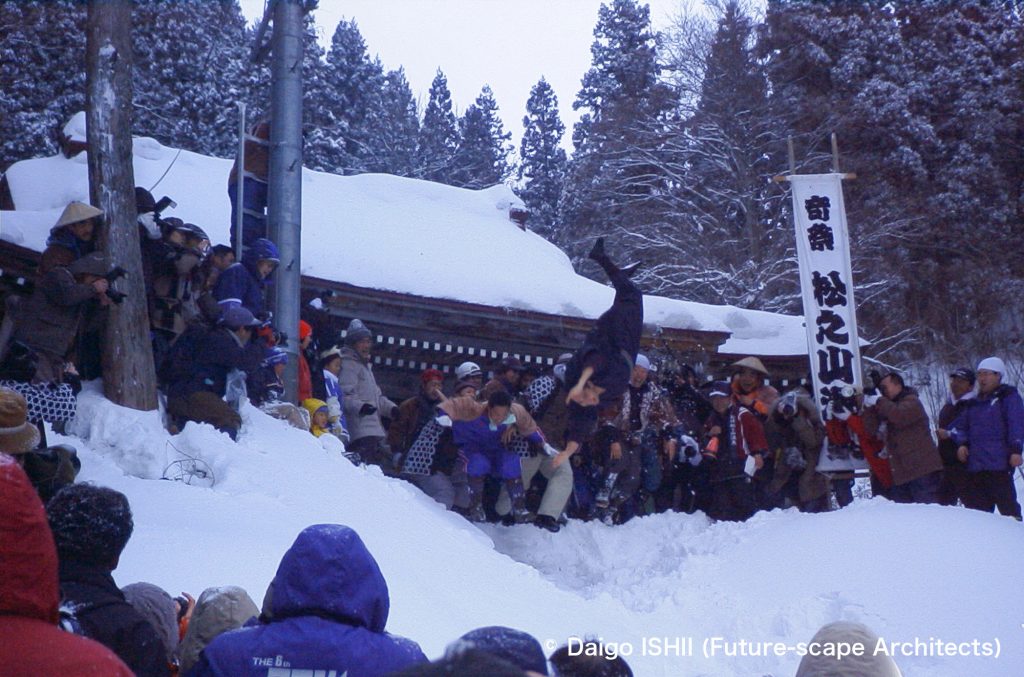
January 15th, after 2pm : In "Muko-nage (Throw away the groom)'', the groom of a couple who got married in the previous year is thrown away by his fellow from the cliff.
https://goo.gl/maps/D9Sdsm4YeF7nxQDX8
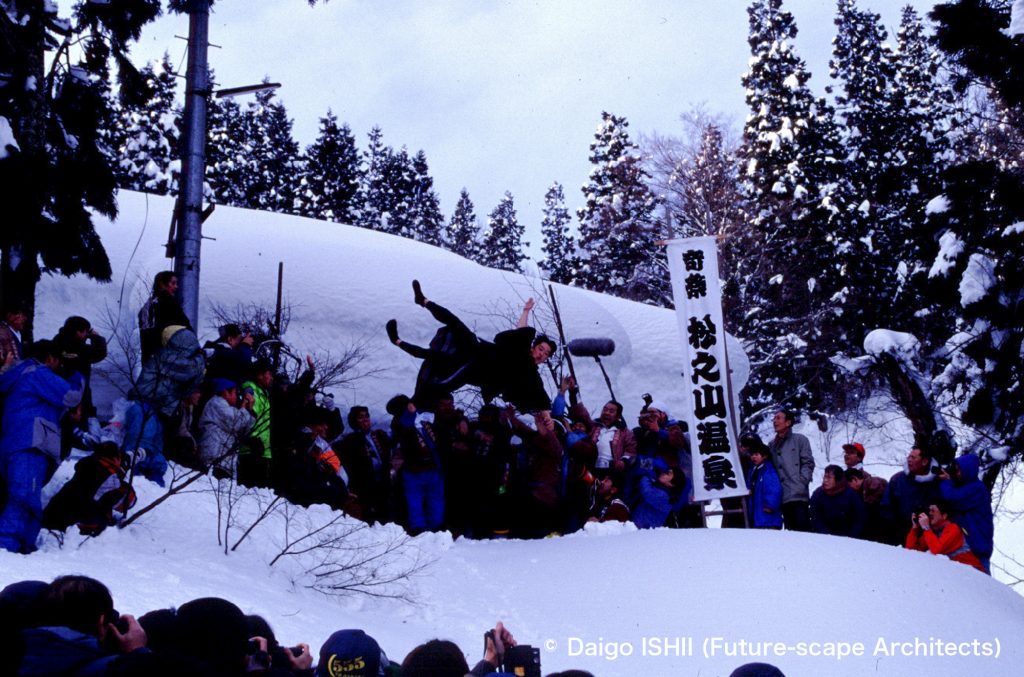
January 15th, after 2pm : In "Muko-nage (Throw away the groom)'', the groom of a couple who got married in the previous year is thrown away by his fellow from the cliff.
https://goo.gl/maps/D9Sdsm4YeF7nxQDX8
墨塗り / Sumi-nuri (Paint charcoal)
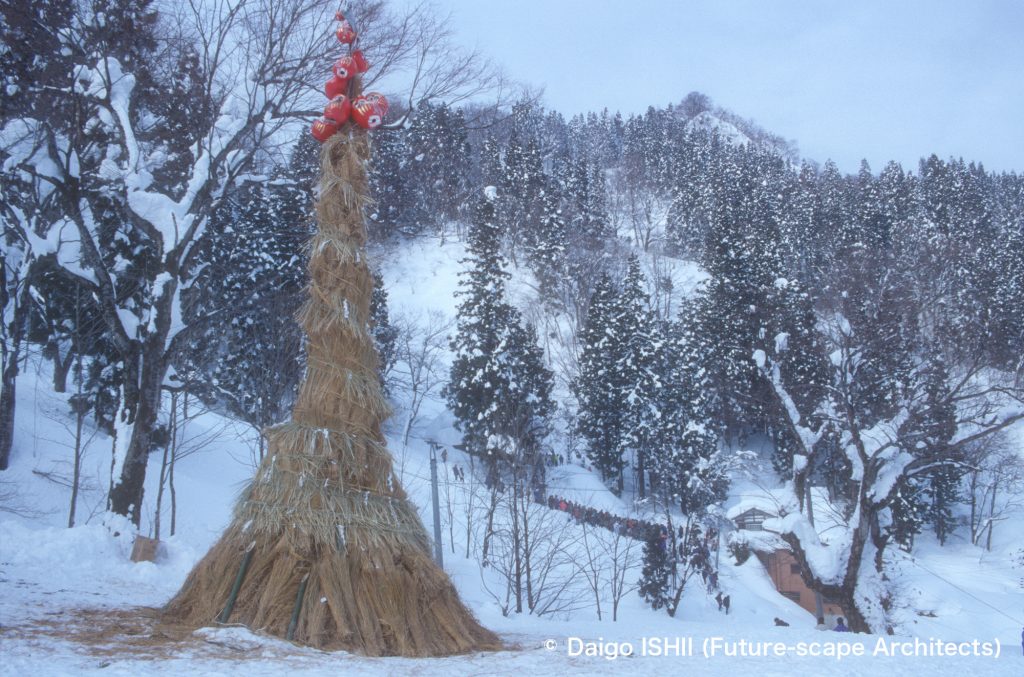
January 15th, after 2pm : See the straw tower to burn in "Sumi-nuri (Paint charcoal)". In the back, people watch "Muko-nage (Throw away the groom)'' that takes place preceding to "Sumi-nuri (Paint charcoal)".
https://goo.gl/maps/US4Sao9PVsop1CfTA

January 15th, around 3pm : People mutually smears their face with straw charcoal in "Sumi-nuri (Paint charcoal)".
https://goo.gl/maps/US4Sao9PVsop1CfTA
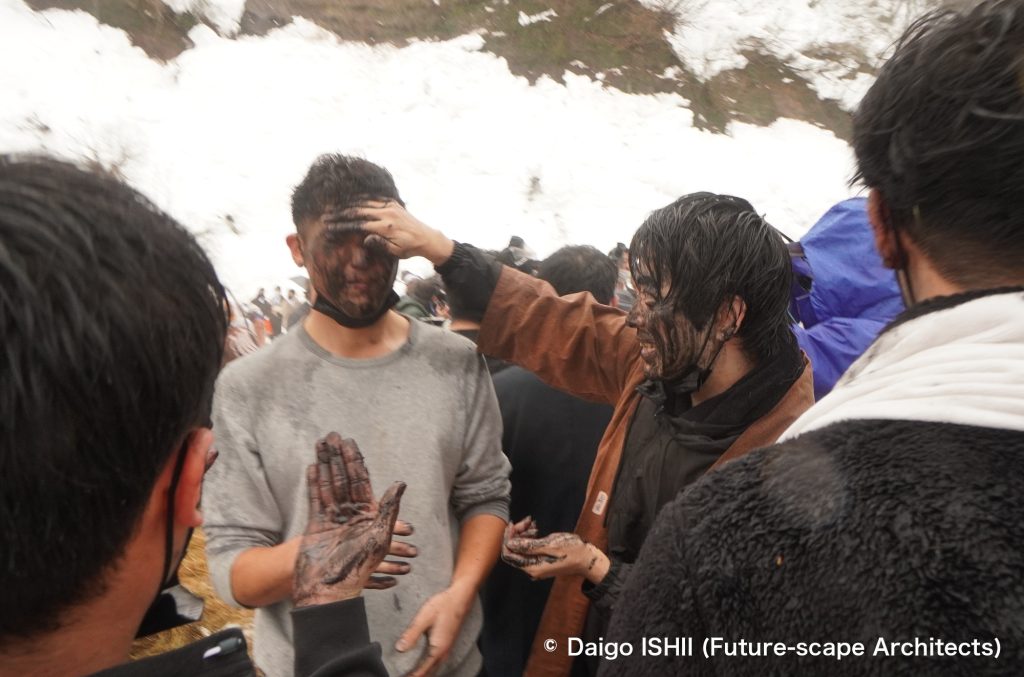
January 15th, around 3pm : People mutually smears their face with straw charcoal in "Sumi-nuri (Paint charcoal)".
https://goo.gl/maps/US4Sao9PVsop1CfTA
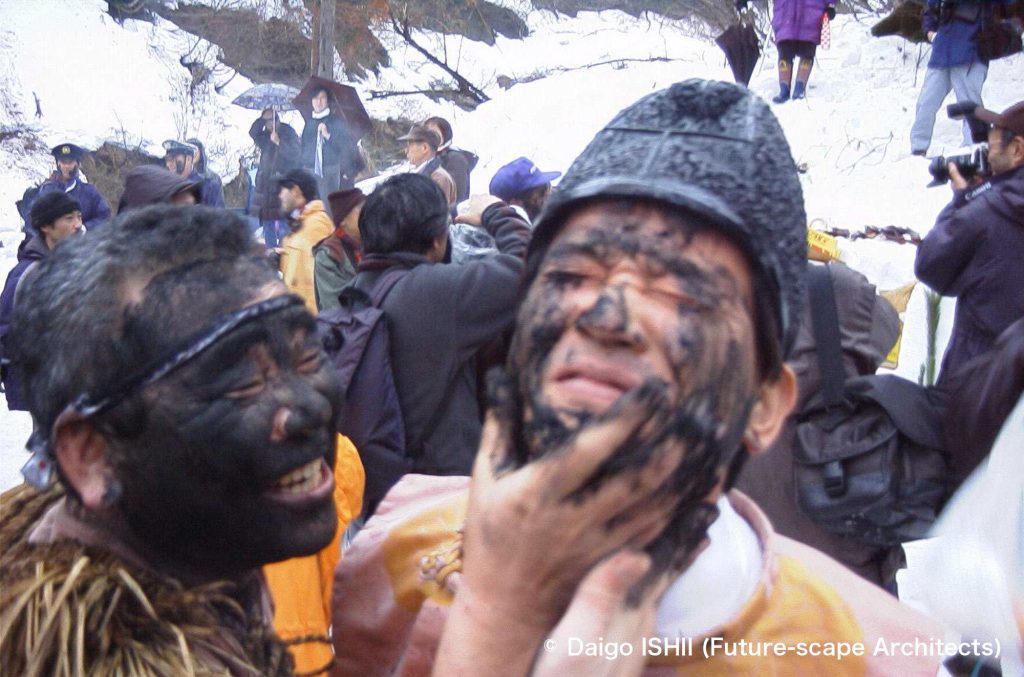
January 15th, around 3pm : People mutually smears their face with straw charcoal in "Sumi-nuri (Paint charcoal)".
https://goo.gl/maps/D9Sdsm4YeF7nxQDX8

January 15th, around 3pm : People mutually smears their face with straw charcoal in "Sumi-nuri (Paint charcoal)".
https://goo.gl/maps/US4Sao9PVsop1CfTAhttps://goo.gl/maps/US4Sao9PVsop1CfTA
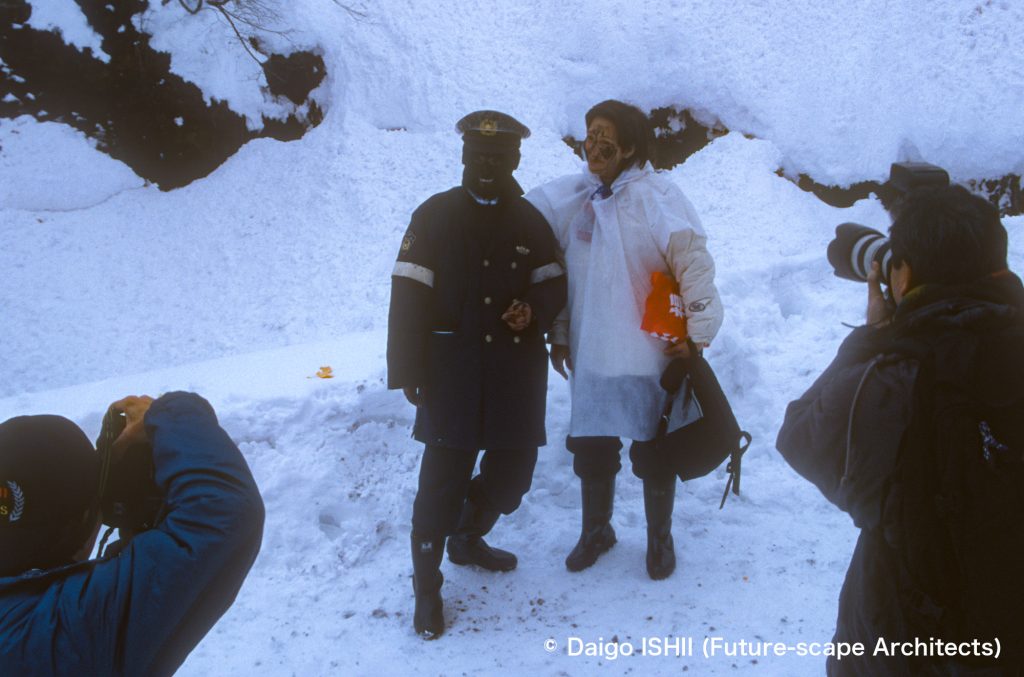
January 15th, around 3pm : In "Sumi-nuri (Paint charcoal)", a black-painted police officer is taking a commemorative photo.
https://goo.gl/maps/US4Sao9PVsop1CfTA
予祝行事 / Event in which a good harvest is prayed
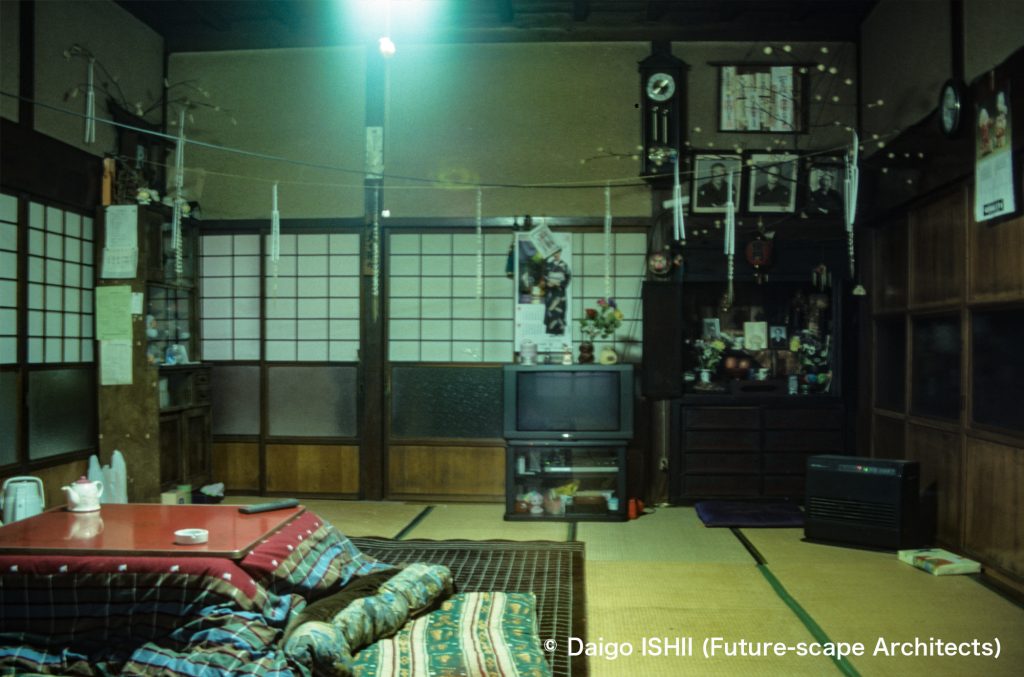
In the Lunar New Year in Tsumari, branches with cocoon balls are displayed on the upper part of the walls in the four corners of a living room in a local house as an event in which a good harvest is prayed. The family decorates the branch with lucky charms such as oval gold coins and lucky charms that they bought at "Sekki-ichi (Season Market)".
ご感想はこちらへ / Click here for your impressions
参考文献 / reference
Wikipedia
写真の無断使用、転用はご遠慮下さい。/ Please do not use or upload our photos without permission.
